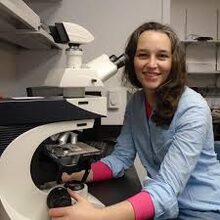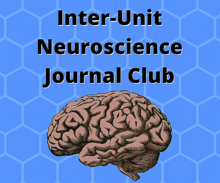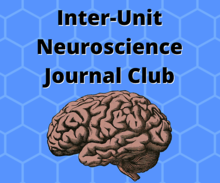Past Events
ZOOM SEMINAR (ONOS series): Hippobellum in health and disease: cerebellar influence on the hippocampus
2021年2月18日 (木) 10:00Hippobellum in health and disease: cerebellar influence on the hippocampus
Prof. Esther Krook-Magnuson, Department of Neuroscience, University of Minnesota
Time: Thursday, Feb 18 at 10 am Zoom link: https://oist.zoom.us/j/96422359435
(ONOS seminar) Unraveling cortical circuits for perceptual decision making
2020年12月11日 (金) 16:00OIST Neuroscience Online Seminar (ONOS)
Prof. Seung-Hee Lee, Associate Professor, Sensory Processing Lab, KAIST
Unraveling cortical circuits for perceptual decision making
Sensory information is a key environmental cue that makes animals guide their behavior. However, it is still unclear how cortical circuits permit appropriate responses to relevant sensory stimuli while inhibiting others. Here, we unraveled cortical circuits that are important for perceptual decision-making in mice performing Go/No-go tasks. We identified parietal and frontal circuits that show unique properties in integrating sensory information and guide action decisions. I will discuss how these circuits work in concert for animals to perform proper action decisions upon the sensory evidence.
ZOOM LINK :
https://oist.zoom.us/j/99896092525?pwd=ZVpMcEQ4SjBISnk4UzJqaFpyeEdOZz09
Meeting ID: 998 9609 2525
Passcode: 931719
Inter-Unit Neuroscience Journal Club (ZOOM)
2020年12月10日 (木) 16:30Inter-unit journal club presentation by PhD student Thato Mokhothu, who will discuss a recent article from eNeuro entitled "Cerebellar Directed Optogenetic Intervention Inhibits Spontaneous Hippocampal Seizures in a Mouse Model of Temporal Lobe Epilepsy"
Visual information processing through the interplay between fast and slow pathways (ONOS)
2020年11月20日 (金) 16:00Prof Si Wu of Peking University, China will give a talk for the OIST neuroscience online seminars (ONOS) series on the topic of "Visual information processing through the interplay between fast and slow pathways". Prof Wu is a PI of IDG/McGovern Institute for Brain Research and the Center for Life Science at Peking University. He is also the Co-editor-in-chief of Frontiers in Computational Neuroscience.
Inter-Unit Neuroscience Journal Club (ZOOM)
2020年11月12日 (木) 16:30Inter-unit journal club presentation by Dr Sam Reiter, leader of the Computational Neuroethology Unit, who will discuss a recent article from Nature Methods entitled "EthoLoop: automated closed-loop neuroethology in naturalistic environments"
Meeting link: https://oist.zoom.us/j/95700149323?pwd=VWQxY0FGQmxVQmtUTVZ2SXRnMGx6dz09
Meeting ID: 957 0014 9323
Passcode: 855303
(ONOS SEMINAR) Neuroscience , Where are we going? From behavior to brain activity and vice versa
2020年10月23日 (金) 16:00ZOOM LINK IS HERE
https://oist.zoom.us/j/92166985125?pwd=Mm9ldEQ0Z0xwaXRLdmYrT1ZtVVRKUT09
Meeting ID: 921 6698 5125
Passcode: 883637
Recent discussions in neuroscience have been arguing about the necessity of a revision to our approach in neuroscience. A common approach in neuroscience starts from a phenomenon such as attention or memory as defined from our psychological heritage, trying to find a brain correlate of this phenomenon. This method has been argued to be suffering from two main problems first is the loosely defined psychological terms and second is the correlation fallacy that has been a major concern in neuroscience. We invited two experts in neuroscience from both OIST and RIKEN trying to get their insight on this problem and how different experimental, mathematical and analytical techniques will help us frame a new path in neuroscience research.
Topic: ONOS discussion seminar
Time: Oct 23, 2020 04:00 PM Osaka, Sapporo, Tokyo
"Transforming visual information between areas V1 and MT" - Dr Nic Price, Monash University
2020年8月27日 (木) 16:00An OIST neuroscience online seminars (ONOS) talk.
Abstract
The visual system is a complex, hierarchically-organised information processing network. Counter-intuitively, successive areas contain less information about a scene, but neural activity is structured to better represent specific information. For example, neurons in primate area MT convey little colour information, but motion direction can be linearly decoded from their activity. The ongoing activity of individual neurons is highly variable, meaning reliable computation depends on collaborative processing across neural populations. However, it remains unclear how visual information is reliably represented across neurons within an area, and how these representations are transformed between areas to extract specific stimulus properties. To address this, we record visually-evoked activity simultaneously from dozens of neurons in V1 and MT in marmosets.
We use decoding techniques to predict stimulus orientation or direction from activity across a neural population. This has allowed us to show that neural representations are affected by stimulus history: recent motion biases predictions in a manner consistent with perceptual illusions; and luminance and contrast changes affect orientation coding, again in a manner consistent with human sensitivity.
We study inter-area communication by comparing the timing of action potentials in V1 with local field potentials (LFP, a population measure of local dendritic activity) in MT. We have shown that action potentials preferentially occur at specific phases of the LFP, and that motion information is best communicated from V1 to MT at specific phases.
Collectively, this suggests that hierarchical information processing depends on action potentials in privileged subsets of neurons occurring in privileged time windows.
Zoom details
Zoom Meeting link:
https://oist.zoom.us/j/95700149323?pwd=VWQxY0FGQmxVQmtUTVZ2SXRnMGx6dz09
Meeting ID: 957 0014 9323
Passcode: 855303
(ZOOM) Inter-Unit Neuroscience Journal Club
2020年8月20日 (木) 16:30Hoban et al. (2020) "Impact of α-synuclein pathology on transplanted hESC-derived dopaminergic neurons in a humanized α-synuclein rat model of PD" PNAS, 117 (26) 15209-15220.
Reviewed/presented for the journal club by Professor Gordon Arbuthnott from the Brain Mechanism for Behaviour Unit.
Zoom Meeting link:
https://oist.zoom.us/j/95700149323?pwd=VWQxY0FGQmxVQmtUTVZ2SXRnMGx6dz09
Meeting ID: 957 0014 9323
Passcode: 855303
"Adult-neurogenesis for memory consolidation during sleep" by prof. Masanori Sakaguchi, M.D., Ph.D. (ONOS seminar series)
2020年7月2日 (木) 4:30The second seminar in the OIST Neuroscience Online Seminars (ONOS), we will host Prof. Masanori Sakaguchi from International Institute for Integrative Sleep Medicine (WPI-IIIS). He will give us a talk about
" Adult neurogenesis for memory consolidation during sleep".
Join Zoom Meeting https://zoom.us/j/99572966347?pwd=RHBDV2pCNFBaQjk0d2dsTTdRaGlLUT09
Meeting ID: 995 7296 6347
Password: 562866
"fsdafds"Adult-neurogenesis for memory consolidation during sleep"Adult-neurogenesis for memory consolidation during sleep"
Inter-Unit Neuroscience Journal Club (ZOOM)
2020年6月11日 (木) 16:30Anderson et al (2018) "Required growth facilitators propel axon regeneration across complete spinal cord injury" Nature, 561: 396-400.
Reviewed/presented for the journal club by PhD student Lina Koronfel from the Optical Neuroimaging Unit.
Zoom details will be announced closer to the date.









